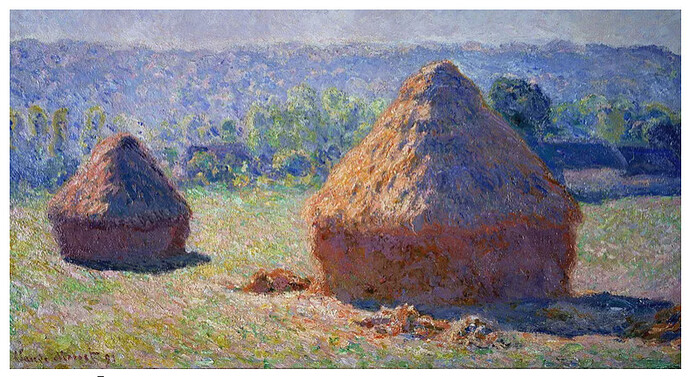One popular rule-of-thumb that falls in the colloquial “color temperature” bucket is that “warm” lights produce cool shadows and that “cooler” lights will cause warm shadows. (The Kelvin scale indeed inverts what these terms may intuitively represent, but the spirit of the idea would still hold). This idea has long been found in many books on painting and color. One example can be found in John Ruskin’s 1834 book, On the Old Road. “It is a well-known optical fact that the color of shadow is complementary [sic] to that of light: and that therefore, in general terms, warm light has cool shadow, and cool light hot shadow.”
While there are many scenarios/contexts where this rule-of-thumb can indeed break down (as with any heuristic), there are some interesting factors to consider that may continue to contribute to its perpetuation.
Putting aside the common influences of ambient light and color reflected off of nearby surfaces, a shadow, or a significant drop in the chromatic influence of an illuminant due to occlusion (or other analogous scenario), might just open the door for noticeable contributions of chromatic induction.
Chromatic induction can be defined as a change in perceived color due to a nearby “inducing” stimulus. Common forms of chromatic induction are simultaneous color contrast and chromatic assimilation. Generally speaking, this means that colors that are in close enough proximity to be viewed together will produce a perceptual influence on each other. There are many competing ideas of the neural mechanisms responsible for this, however it seems fairly likely that this mechanism has evolved to amplify contrasts that may indeed improve our chances to elicit useful visual information. As such, we many tend to perceive one color “push” a second towards the perceptual antagonist of the first (and vice versa). If the second is not “strong” (i.e., very low in chroma), it will take on a more salient “amount” of that antagonist.
So as you might imagine, a surrounding color (esp. a strong illuminant) may hold a consideration-worthy influence over how resulting shadows are perceived. For example, in the graphic shown, each simulated cast shadow is a neutral gray. However, as we examine each one in its presented context —you may notice that each seems to contain some amount of the perceptual opponent of the simulated illuminant color. Granted, this effect can be easily overwhelmed with other factors—but it remains a factor worth consideration nonetheless.
Happy Painting!

